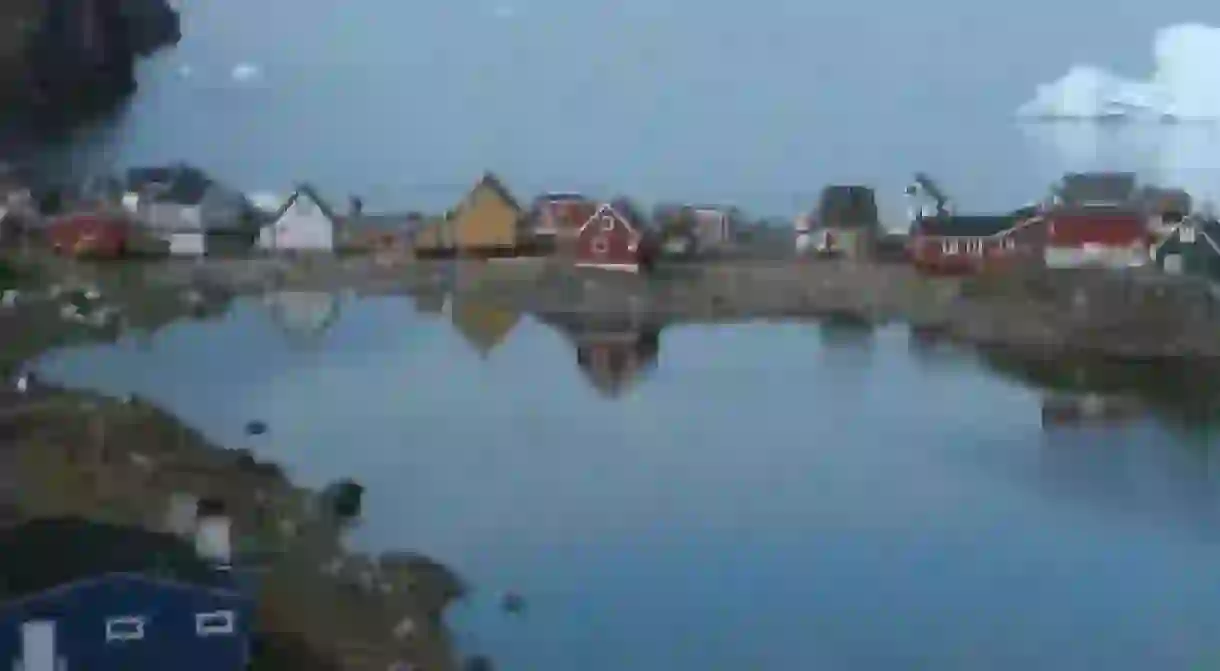Village At The End Of The World: Greenland Documentary

Best known for her British drama Brick Lane, Sarah Gavron’s new documentary Village at the End of the World takes its audience on a journey to a remote settlement in North Greenland. With a dwindling population which may see the town die out, Gavron provides an honest and captivating look into life in one of the most remote places on Earth.

In North West Greenland, there is a remote village named Niaqornat, population 59. Here the community relies on every resident, and every birth, death and departure is felt by the whole population. With months of complete darkness, freezing seas in winter, dire temperature drops and a real dependence on the village’s hunters to bring back fish, polar bear or whale, life in Niaqornat is a continuous struggle against the elements. However; Sarah Gavron’s documentary Village at the End of the World reveals the unexpected; Niaqornat is filled with quirky characters who are quick to tell a joke, proud to show their culture, and who embrace both the modern and traditional aspects of their lives. Through her open and respectful approach, Gavron unveils a rare and truthful glimpse into one the world’s most isolated communities, and instead of layering the film with outside commentary, she lets the residents speak for themselves, giving the audience a rare experience: the opportunity to truly listen.
The documentary observes Niaqornat at time of high tension, with the village being at the brink of extinction; if the population drops below 50 then the residents will be forced to move, and with the closure of the village’s only income, the fish factory, some have had no option but to relocate to find work. Questioning the emotive concept of home, the film follows the stories of a few key characters and their unique perspectives on life in this coastal settlement. These personas include Lars, a teenager obsessed with the online world who is eager to leave the village; Karl, the village hunter who is battling to reopen the fish factory to keep the village alive; Ilannguaq, an outsider who found a new home in Niaqornat after meeting his girlfriend via online dating; and Annie, the oldest lady in Niaqornat, who has seen the transformation from times when seal blubber was used to light lanterns, to today’s conveniences of electricity and the once a year deliveries from supply ships. It is through these contrasting views and the characters’ relations that the audience perceives the highs and lows of life in near Arctic conditions.
One of the greatest aspects of the documentary is its authentic and respectful tone, creating a genuine connection between the characters and the viewer. Born in Britain, director Sarah Gavron gained critical acclaim with her film Brick Lane, based on the novel by Monica Ali, which follows a young Bangladeshi girl who moves to Brick Lane in London because of an arranged marriage. Although both films have a heavy cultural focus, Village at the End of the World took Gavron’s work to a new genre, the film representing her first major documentary. Perhaps it was this crossing into the unknown that gives the film its refreshing freedom and reverent quality. Already having proved her talent, Gavron didn’t need to overly push her own artistic vision; instead, she was able to completely embrace the culture and viewpoints of the people of Niaqornat, letting them tell their own stories. To produce this project, Gavron lived in the village over the course of a year, and was accepted into the close-knit community, allowing her to see the village from the inside out. With this relationship forming the base of the film, Village at the End of the World highlights vexed topics such as global warming, whaling, Greenland’s high suicide rate and the Royal Greenland‘s push to move village residents into towns from both a local and outsider perspective, leaving these issues as resounding questions for the audience to contemplate after watching.
Village at the End of the World is a beautiful exploration of not only one of the most remote corners of the world, but also an investigation into the universal relationship between the individual, the community and the nation. Always respectful yet full of complex questions, Gavron provides an insider’s perspective into the mysteries of an unknown community. Visually stunning, emotively engaging and intellectually stimulating, Village at the End of the World is a fantastic cultural exploration of life in Greenland, and a standout example of the illuminating power of documentary.













